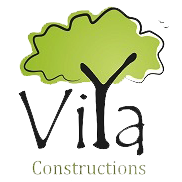A B C D E
- Arch – It is a structural construction of masonry constructed by the mechanical arrangement of wedge-shaped blocks of stone or brick arranged in the form of a curve supporting wall or load above the opening.
- Baluster – Balusters are the vertical posts that connect the handrail to the treads or the floor. Several evenly spaced balusters and the decorative handrails together form the balustrade.
- Banister – Banister or Handrail is the protective bar that is placed above the stairs. A handrail serves multiple purposes, a few of them being acting as a protective barrier, a support especially for the elderly and kids while climbing or descending and also to enhance the aesthetics of the staircase. Handrails are placed on one or both sides of the staircase.
- Basement – the part of building above foundation that provides accommodation and is below the ground level
- Beam – a horizontal reinforced concrete structure built at above ground level
- Belt – steel reinforced concrete structure that runs over the basement to evenly redistribute weight of building
- Column – An isolated vertical load bearing member, the width of which is neither less than its thickness nor more than four times its thickness.
- Cornice – It is a projecting ornamental course near the top of a wall or at the junction of wall and the ceiling
- Dead Loads – weight of immovable parts of a building including the components that makes up the building like beams, slabs and columns
- Deep Foundation – If the depth of the foundation is more than the width it is called Deep Foundation
F G H I J
- FAR – Floor Area Ratio (Total area covered of all floors x 100) / Plot area
- Footing – a square or rectangular pad of concrete on which the column or pillar rests
- Foundation – the part of a building that connects the building to the ground and transfers the entire load of building to the ground
- Gable – it is a triangular-shaped masonry work provided at the ends of a sloped roof.
- Jambs – Jambs are the vertical sides of a finished opening for the door, window or a fireplace
K L M N O
- Landing – A staircase landing is an area of the floor at the top or bottom of the staircase. Similarly, there can be landings between flights of stairs that facilitate the change of direction of the stairs.
- Lintel – It is a horizontal member which is placed across the opening. It is a sort of beam, the width of which is equal to the width of the wall and ends of which were built into the wall.
- Live Loads – weight of occupied (and movable) components of the building like people, furniture and fixtures.
- Nosing – It is a good practice to provide a rounded overhang to the tread of the staircase. This provides an aesthetic look and also increases the width of the tread thereby enhancing the ease of using the staircase. This overhang to the tread that extends beyond the riser is called a nosing.
P Q R S T U
- Parapet – It is the portion of a low height wall constructed along the edge of the roof to protect the users.
- PCC (Plain Cement Concrete) – concrete mixture made of cement, sand and gravel
- Pile – a post like foundation that is driven into the ground to support the building
- Plinth – a horizontal reinforced concrete beam built at ground or below ground level
- PSI (Pounds per Square Inch) – measuring unit of concrete’s strength
- Riser – The riser of a staircase is that vertical component that connects two treads. The riser acts as a support to the tread. Open stair designs that eliminate the use of risers are gaining popularity for its eye-catching looks and style quotient.
- Roof decking – It is a structural component that supports the roof covering.
- Shallow Foundation – If the depth of the foundation is equal to or less than the width, it is called Shallow Foundation
- Slab – steel reinforced concrete that forms floors and ceilings
- Strata – a level below the top soil
- Tread – The tread of a staircase is the upper horizontal part where you place your foot while using the staircase. The thickness of the tread is usually the same as that of other flooring. Treads can be either straight or convex in shape.
- Waist – The steps of a staircase are usually made on a sloped slab. It is this slab that supports the step. The waist of a staircase is the thickness of this waist slab.
V W X Y Z

